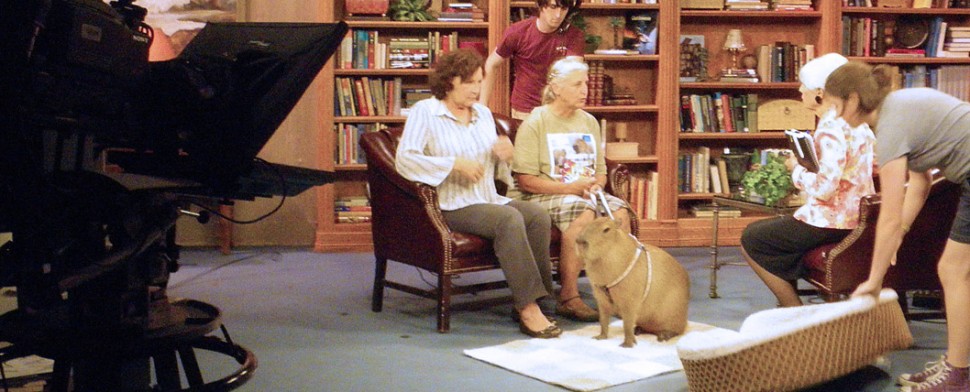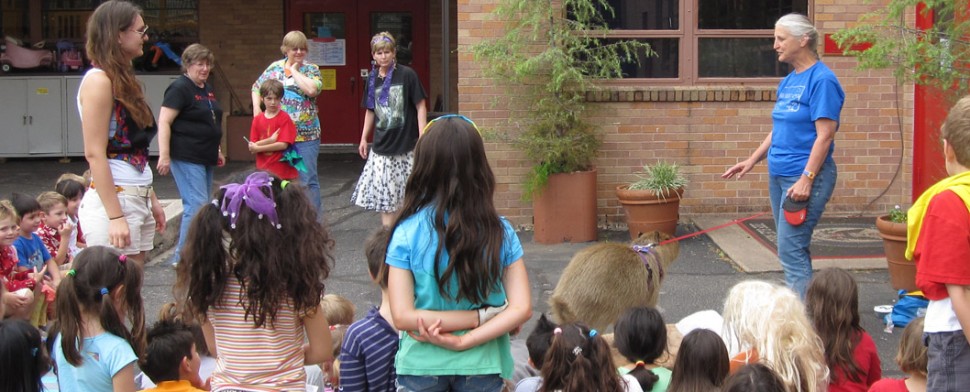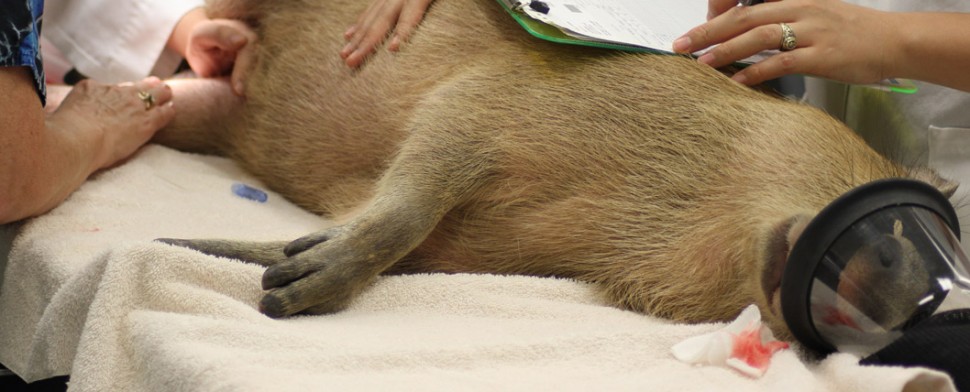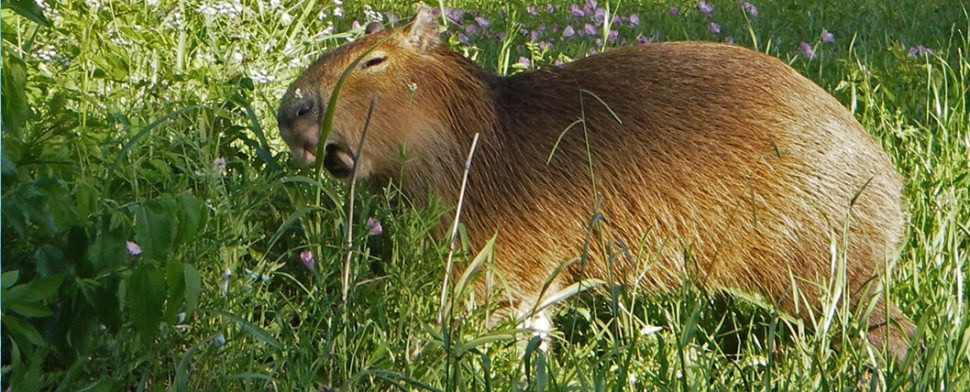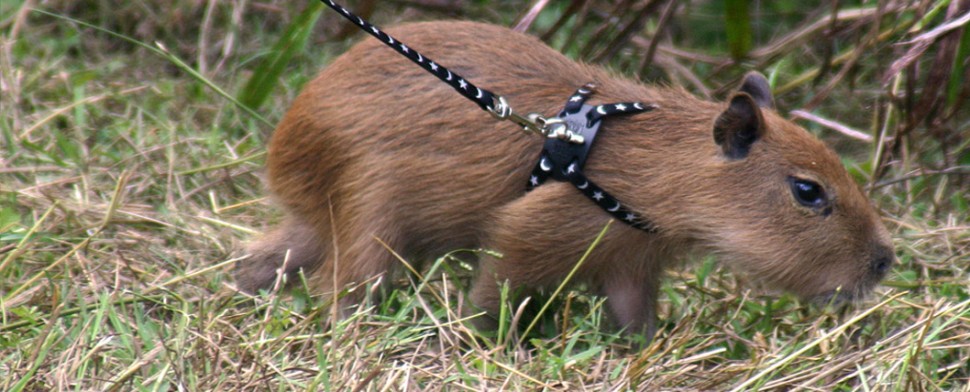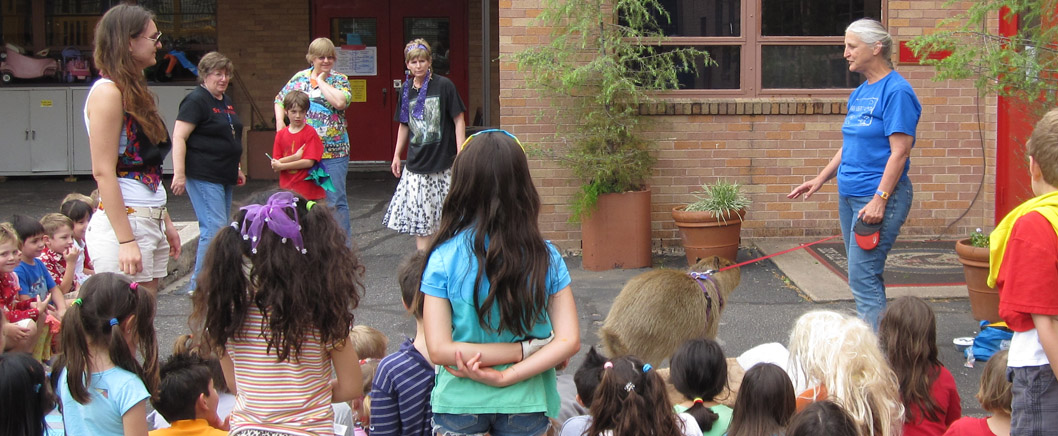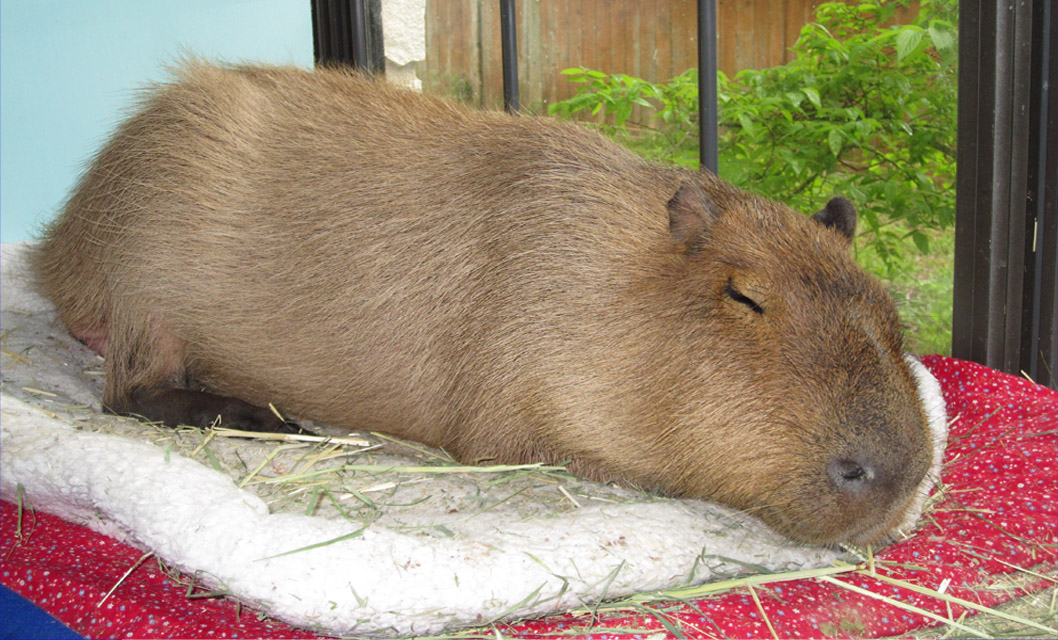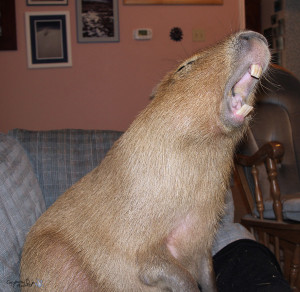Health
As capybara caretakers, nothing is more important to us than our animals. Sadly, little is know about the proper care of capybaras. The ROUS Foundation supports several research projects on the health and care of captive capybaras.
Research Studies and Projects:
RF Why Weight? Program
Academic Weight Study
Necropsy Program
Case Studies:
Aspiration pneumonia in Mudskipper Rous
How to Sex an Infant Capybara:
It is notoriously difficult to sex young capybaras. Some males do present male behaviours at a very young age, when only a few week old. This would include marking and mock intercourse with other capybaras or even inanimate objects. However, it is possible to use anatomical features to sex young capybaras, although this may take practice. Many breeders have noticed that the females have nipples, while the males do not, and though this is readily observable in very young capybaras, it is not infallible.
Young capybaras can be sexed by comparing the anogenital distance (the distance between the anus and the genital papilla) between capybaras of different sexes. The males have a greater distance than females. However, this distance will only be detectable to a novice while comparing several capybaras of different sexes.
Common Health Concerns:
Being such large animals, especially for rodents, people often assume that capybaras are robust health-wise. Unfortunately, this does not seem to be true. Capys are, in fact, prone to a variety of illnesses in captivity. This page goes over some of the health issues that the ROUS Foundation has seen in captive capybaras.
Each health issue is discussed in five parts: name, symptoms, treatment, outcomes, and prevention. If you are a caretaker for a captive capybara, please read the page in its entirety. If you have a capybara who is/has suffered from any of these conditions or from something not listed, please contact us.
- dental problems
- Broken incisors:
- symptoms: Broken incisors are not always readily visible. Sometimes an incisor will break off above/below the gumline and fall out. (Refer to photo below of healthy incisors.)
- treatment: New incisors grow back quickly, usually in 2-3 weeks. There is rarely a need to trim the remaining incisors: they will wear normally as the new incisor grows in. If two adjacent incisors break off near the gumline, it will be difficult for your capybara to graze, which requires them to “cut” the grass and then pull it into their mouth. In this case, you will need to cut short lengths of grass, slivers of apple and yam, wheels of carrot and corn. They can usually eat these items out of a bowl with low sides. You can also supplement with pieces of soft fruit, cut vegetables, soaked hay, or soaked pellets. Remember that the capybara’s molars are still functional, the problem is just in cutting or chopping food into an appropriate size for mashing with the molars.
- outcome: Complications are rare if the breakage is due to an accident. If the new incisors do not appear within two weeks, breakage might be due to a more serious health issue, such as bone density, Vitamin C deficiency, or a genetic problem, and a veterinary dentist should be consulted.
- prevention: A healthy capybara has very strong teeth that are able to withstand a strong bump. Accidents are difficult to prevent, but if your capybara frequently breaks or loses incisors, a vitamin deficiency should be suspected. Animals with scurvy are more prone to broken incisors, sometimes accompanied by bleeding gums.
- IN PROGRESS – There are many other problems that can occur with outsized rodent teeth. For now, if you have other questions about your capybara’s teeth, please contact us directly.
- Broken incisors:
There are several videos available that demonstrate dental procedures:
- scurvy
- symptoms: slow growth, hair loss, weak ligaments, bleeding gums, low bone density
- treatment: increase vitamin C intake. Vitamin C dosage should be at least 1,000 mg per day for an adult capybara (over 100 lbs)
- outcomes: dwarfism, deformities in the legs, dead or decaying teeth, death
- prevention: as with treatment, prevention focuses on including a high level of vitamin C in the diet. Unlike most mammals, capybaras and other cavies cannot synthesize their own vitamin C. Do not rely on guinea pig food as a source, or on other typical natural sources of vitamin C. Capybaras appear need high levels of this vitamin.

- Injuries
In general, capybaras recovery from injuries quickly.- The most common injury is the loss of an incisor. Even an incisor broken off near of above the gum line typically grows back within two weeks. Refer to the dental section above for more information.
- Cracked or broken molars should be taken seriously as they may be a sign of either vitamin C (scurvy) or calcium deficiency. The dietary feed should be modified to increase the content of these two nutrients.
-
- Due to various causes, including fighting among capybaras, especially males, capys may injure their face or lips. While many of these injuries resolve on their own, in some cases stitches or surgery may be required.
Capybaras can survive surprisingly extensive damage to the lips, as shown in the photo above. However precautions should be taken to prevent such injuries. These injuries are often caused by capybaras fighting for dominance, especially among males. If kept together, male capybaras must be provided with sufficient room and barriers to allow them to avoid direct interaction.
- Due to various causes, including fighting among capybaras, especially males, capys may injure their face or lips. While many of these injuries resolve on their own, in some cases stitches or surgery may be required.
- frostbite
- IN PROGRESS

